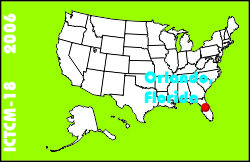
Electronic Proceedings of the Eighteenth Annual International Conference on Technology in Collegiate MathematicsOrlando, Florida, March 16-19, 2006Paper S068
Topics in Fractal and Non-Euclidean Geometries, Instructional Technology, and the Lower-Division College Mathematics Curriculum |
Reza SarhangiDepartment of Mathematics Towson University 8000 York Road Towson, MD 21215 USA rsarhangi@towson.edu list of all papers by this author | Mehri ArfaeiInstructional Technology Towson University 8000 York Road Towson, MD 21215 USA marfaei@towson.edu |
| Click to access this paper: |
ABSTRACT
Similarity plays an important role in art, industry, architecture, and technology. For a broad understanding of a large construction project, a common and perhaps necessary approach is to generate a model; a scaled-down version of the larger structure that in every aspect is similar to the larger structure.In this article we would like to show how in a lower-division mathematics course, that perhaps can be considered as a general education curriculum class, the terms 'magnification', 'similarity', 'scale factor' and 'self-similarity' can be explored through a software such as the Geometer's Sketchpad. The use of Sketchpad, and in general the computer, greatly enhances the understanding of these geometric ideas. The self-similarity concept is normally categorized as a part of a bigger spectrum that is called fractal geometry. Even though we present some examples of fractal geometry, we leave the task of studying this geometry to other articles.
Among some new instructional technologies, there are two software utilities that provide students the opportunity of experiencing the properties of the hyperbolic geometry dynamically: NonEuclid, creates an interactive environment for learning and exploring non-Euclidean geometry, and a utility which has been developed based on the Geometer's Sketchpad that allows students to study aspects of hyperbolic geometry using the Poincare model. These two utilities will be introduced in this article.
Keyword(s): geometry, Geometer's Sketchpad, software
